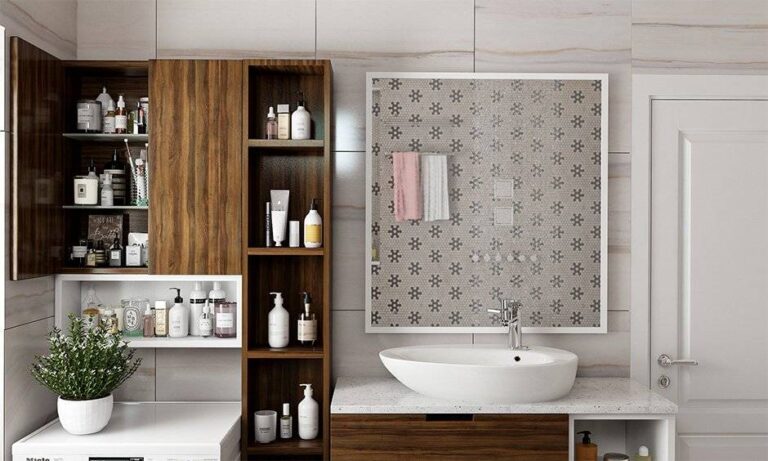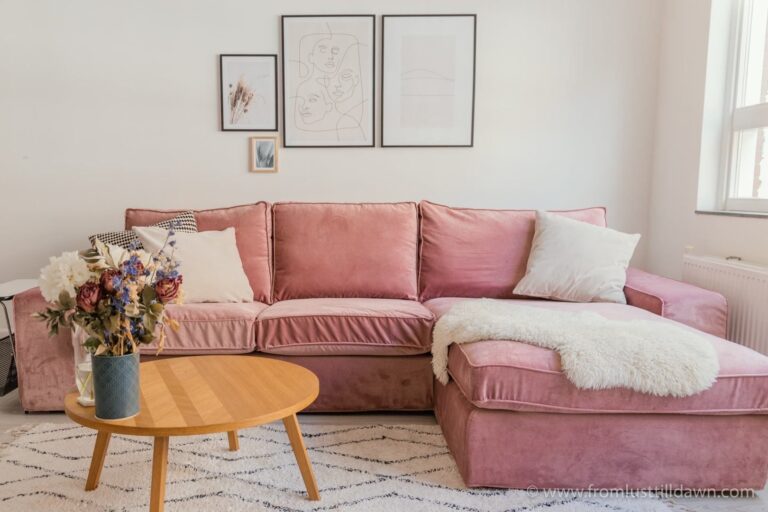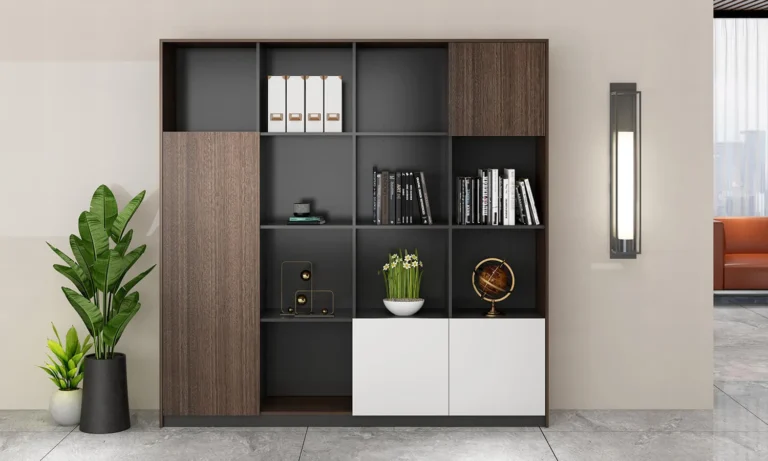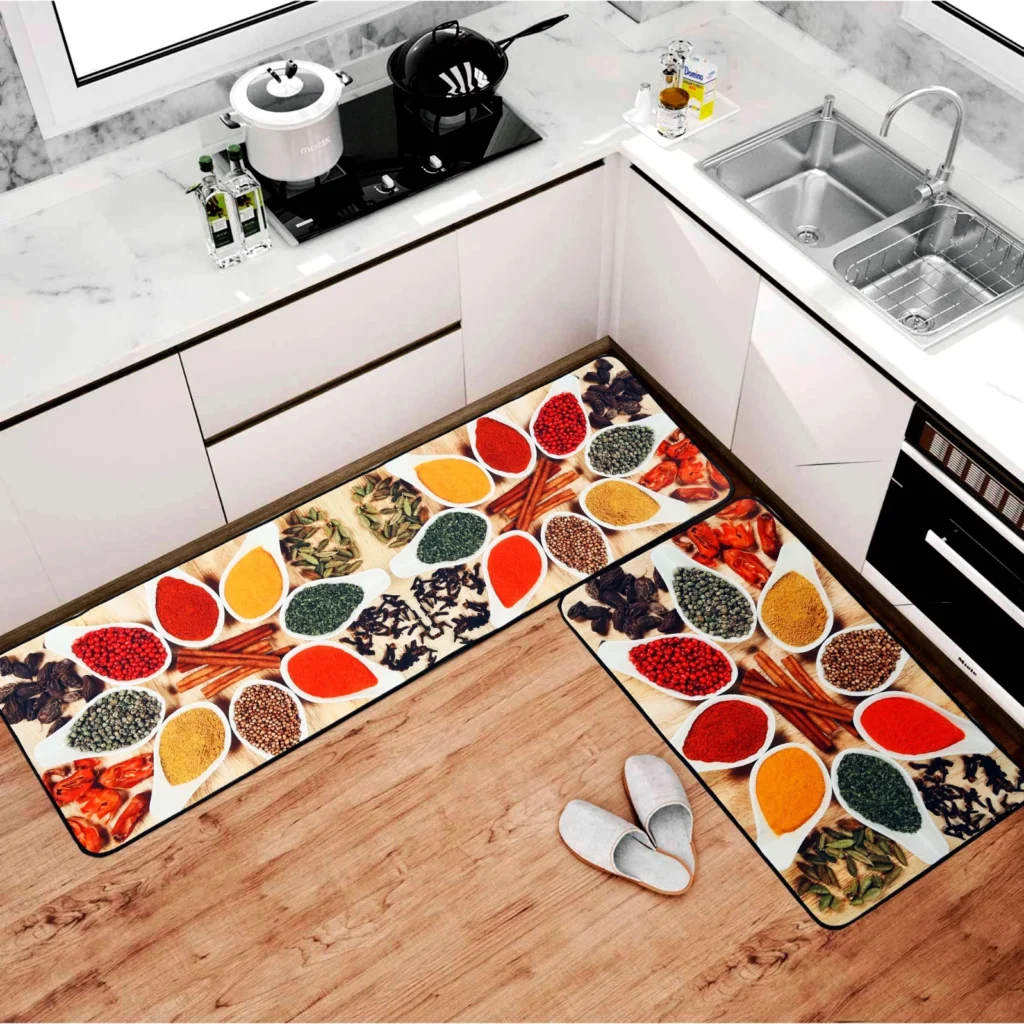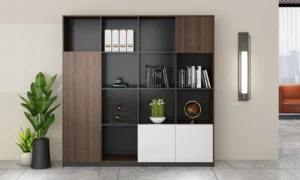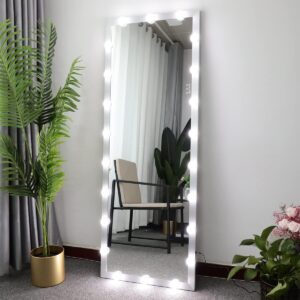It’s a typical busy weeknight, and you’re preparing dinner in the kitchen after a long work day. You’re chopping vegetables, sautéing onions, and moving back and forth between the sink, stove, and refrigerator. Halfway through your meal prep, your feet start to ache, your lower back feels tight, and you wish there were anything to make standing on your hard kitchen floor a little more comfortable. That’s when you realize you’re missing a good kitchen mat.
For many, the kitchen is the heart of the home, a place where meals are prepared, conversations are shared, and memories are made. But with all the time spent standing on hard floors, especially during long cooking sessions or while cleaning up, kitchen-related discomfort and fatigue can set in quickly. This is where kitchen mats come in. More than just an aesthetic accessory, a high-quality kitchen mat can make a significant difference in comfort, health, and safety. In this article, we’ll explore the various types of kitchen mats, their benefits, and their essential role in the kitchen.
Why You Need a Kitchen Mat: Reducing Fatigue and Improving Comfort
The average person spends a significant amount of time standing in the kitchen, whether cooking, cleaning, or entertaining guests. According to a report by the U.S. Department of Agriculture (USDA), Americans spend an average of 37 minutes a day preparing meals, with additional time spent on other kitchen-related tasks such as cleaning up or washing dishes. While that may not sound like much at first, when you consider the hard surfaces found in most kitchens, it’s easy to see how prolonged standing can lead to discomfort.
Standing on hard surfaces like tile, concrete, or hardwood for extended periods can result in various physical discomforts, including foot pain, lower back strain, and joint fatigue. This isn’t just a minor inconvenience; these issues can lead to more severe health concerns over time. According to the National Institute for Occupational Safety and Health (NIOSH), prolonged standing at work is linked to musculoskeletal disorders (MSDs), particularly affecting the lower back, legs, and feet. While NIOSH focuses on workplace safety, these findings apply equally to home environments, particularly in kitchens where individuals spend long-standing.
Anti-Fatigue Kitchen Mats: A Solution for Comfort
Many people turn to anti-fatigue kitchen mats to combat discomfort and reduce the risk of fatigue. These mats are specifically designed to provide cushioning and support for your feet, reducing the strain on your joints and muscles. They’re commonly used in professional settings like restaurants and workshops, where employees are on their feet for hours, but have since made their way into home kitchens for their proven health benefits.
How Do Anti-Fatigue Mats Work?
Anti-fatigue mats are typically made from materials like foam, gel, or rubber, providing a softer surface than traditional kitchen floors. By encouraging subtle movements, these mats improve blood circulation, reduce stress on pressure points, and promote better posture. A study by The Journal of the American Podiatric Medical Association found that anti-fatigue mats can minimize foot discomfort by as much as 50%, making them essential for people who spend extended periods standing in one place.
Kitchen Mats and Safety: A Slip-Free Kitchen
While comfort is crucial, safety is another primary reason to invest in a kitchen mat. Kitchens are prone to spills—water, oil, or food—that can create slippery surfaces and increase the risk of falls. According to data from the National Safety Council (NSC), slips, trips, and falls are among the leading causes of injuries in the home, particularly in areas like the kitchen where wet or greasy floors are standard.
Non-slip kitchen mats can help mitigate this risk by providing a stable, textured surface that minimizes slipping. These mats often come with rubberized backing to ensure they stay in place, even when the floor is wet. This is especially important in households with young children or elderly family members, who are more vulnerable to falls and injuries.
Types of Kitchen Mats: Finding the Right Fit
There’s no one-size-fits-all solution when it comes to kitchen mats. The choice depends on the individual’s needs, kitchen layout, and design preferences. Here are some of the most common types of kitchen mats and what they offer:
- Anti-Fatigue Mats:
- As mentioned, these are designed to reduce strain on your feet and back, making them ideal for people who spend much time standing while cooking or cleaning. They are typically made from foam or gel and come in various thicknesses to provide different comfort levels.
- Gel Mats:
- Gel kitchen mats are anti-fatigue mats that use gel instead of foam to cushion your feet. They are praised for their superior comfort and durability. According to a survey by Consumer Reports, 89% of users preferred gel mats over traditional foam mats for long cooking sessions.
- Memory Foam Mats:
- These mats offer a plush, cushioned surface that conforms to the shape of your feet. Memory foam mats are often used in kitchens for both comfort and aesthetics. While they’re typically softer than gel mats, they may not offer the same level of durability.
- Non-Slip Mats:
- These are designed for safety, featuring rubber or textured surfaces that prevent slips and falls. Many non-slip mats are water-resistant, perfect for placement near the sink or dishwasher.
- Decorative Kitchen Rugs:
- For homeowners looking to add a touch of style to their kitchen, decorative kitchen rugs offer both functionality and design appeal. While they may not provide the same level of cushioning as anti-fatigue mats, they can still offer some comfort and safety. They’re often used in smaller kitchens or in combination with more functional mats.
Choosing the Right Kitchen Mat: What to Consider
When selecting a kitchen mat, several factors must be considered to ensure it meets both your comfort and safety needs. Here’s what to consider:
- Material: Foam and gel mats provide the most comfort but may be more expensive. Rubber and vinyl mats are more durable and water-resistant, making them better suited for high-traffic areas.
- Size: Kitchen mats come in various sizes, so choosing one that fits your kitchen layout is essential. A larger mat will provide more comfort and coverage for areas where you stand the most, such as in front of the sink or stove.
- Thickness: Thicker mats offer more cushioning but may only be suitable for some spaces, especially if tripping over the mat’s edges is risky. Most anti-fatigue mats range from ¾-inch to 1-inch in thickness.
- Style: While function is critical, there’s no reason to sacrifice style. Kitchen mats come in various colours and designs, allowing you to match your mat to your kitchen’s decor.
- Durability: High-quality kitchen mats can last years, even with heavy use. Make sure to choose a mat with a durable surface that can withstand frequent spills and cleaning.
The Environmental Impact: Sustainable Kitchen Mats
As more consumers become environmentally conscious, there’s growing interest in eco-friendly kitchen mats. Sustainable options from recycled materials, natural rubber, or non-toxic foam are increasingly available. According to a report by Research and Markets, the global market for eco-friendly home goods, including sustainable flooring and mats, is projected to grow by 6.8% annually between 2021 and 2026. For consumers who prioritize sustainability, choosing an eco-friendly kitchen mat is one way to reduce their carbon footprint.
The Financial Benefits: An Affordable Investment in Comfort
Investing in a high-quality kitchen mat is not just about comfort—it’s also a cost-effective decision in the long run. HomeAdvisor says the average cost of a kitchen mat ranges from $20 to $200, depending on size, material, and features. While it may seem like a small purchase, the long-term benefits, such as reduced fatigue and injury prevention, can make it well worth the investment.
Furthermore, a durable mat can last for years, eliminating the need for frequent replacements. Many manufacturers offer warranties of up to 10 years, ensuring that your kitchen mat will withstand regular wear and tear. In terms of cost-benefit analysis, the relief from physical discomfort and the added safety can potentially prevent more severe health issues or injuries, which would come with significantly higher costs.
Conclusion
A kitchen mat may seem like a small addition to your home, but its benefits are far-reaching. From reducing fatigue and discomfort to improving safety and enhancing the overall look of your kitchen, it plays a crucial role in making your daily kitchen tasks more enjoyable and comfortable. You can transform your cooking space into a safer, more relaxed, and aesthetically pleasing environment by choosing the right kitchen mat for anti-fatigue support, slip resistance, or eco-friendly materials.
Whether you’re preparing meals for your family, entertaining guests, or simply spending time in the heart of your home, a quality kitchen mat can make all the difference in how you feel—and how much you enjoy your time in the kitchen.
